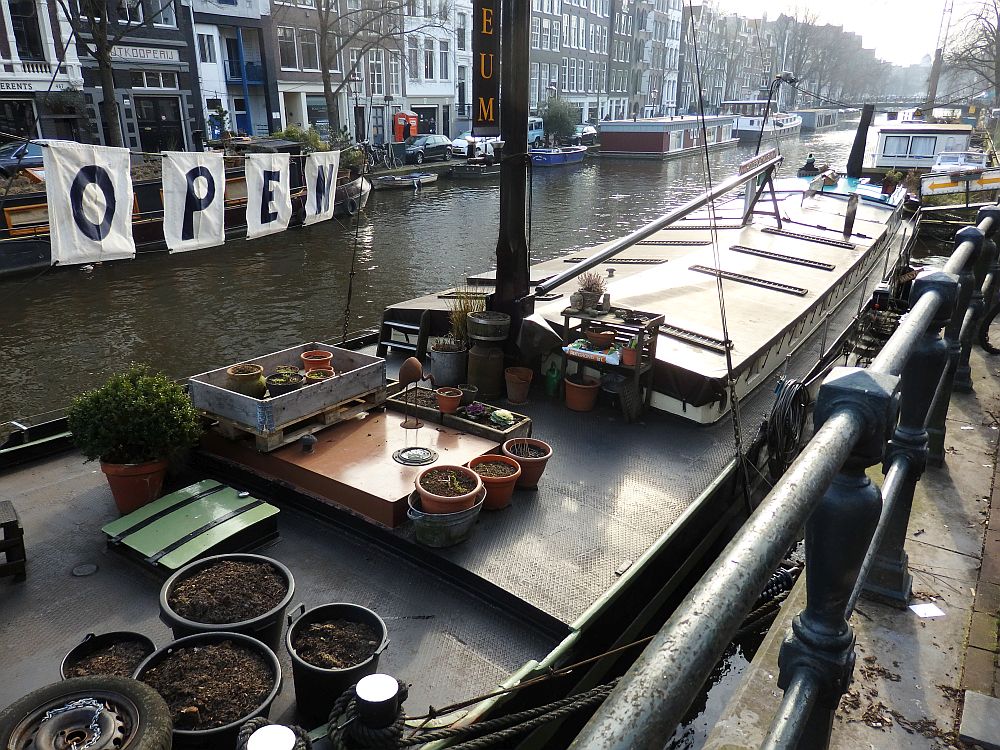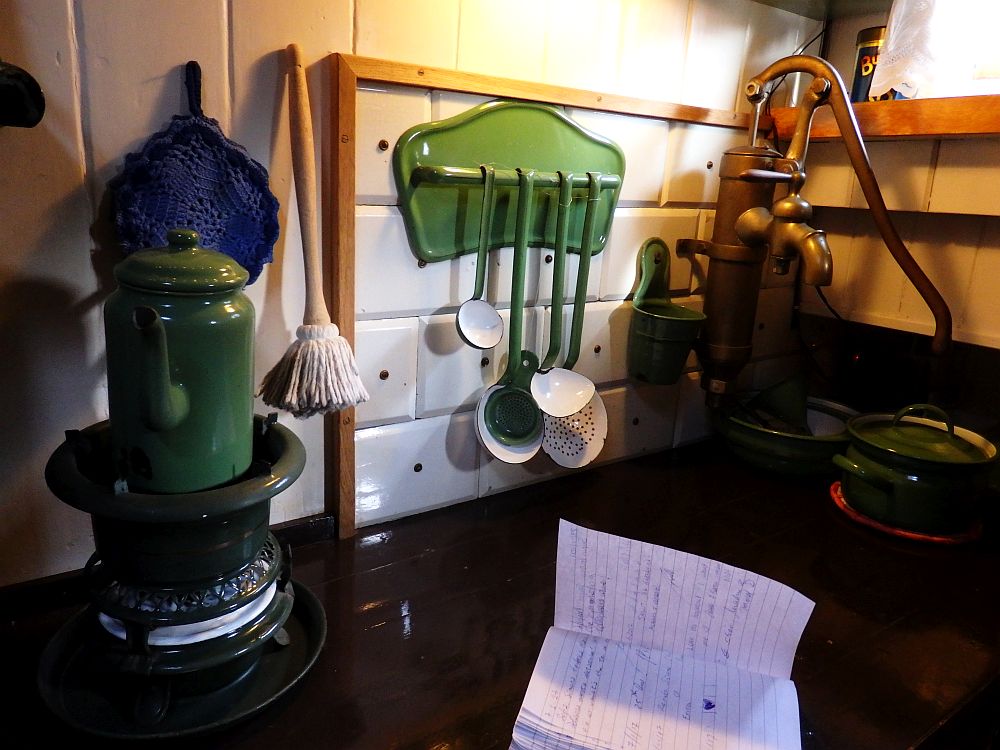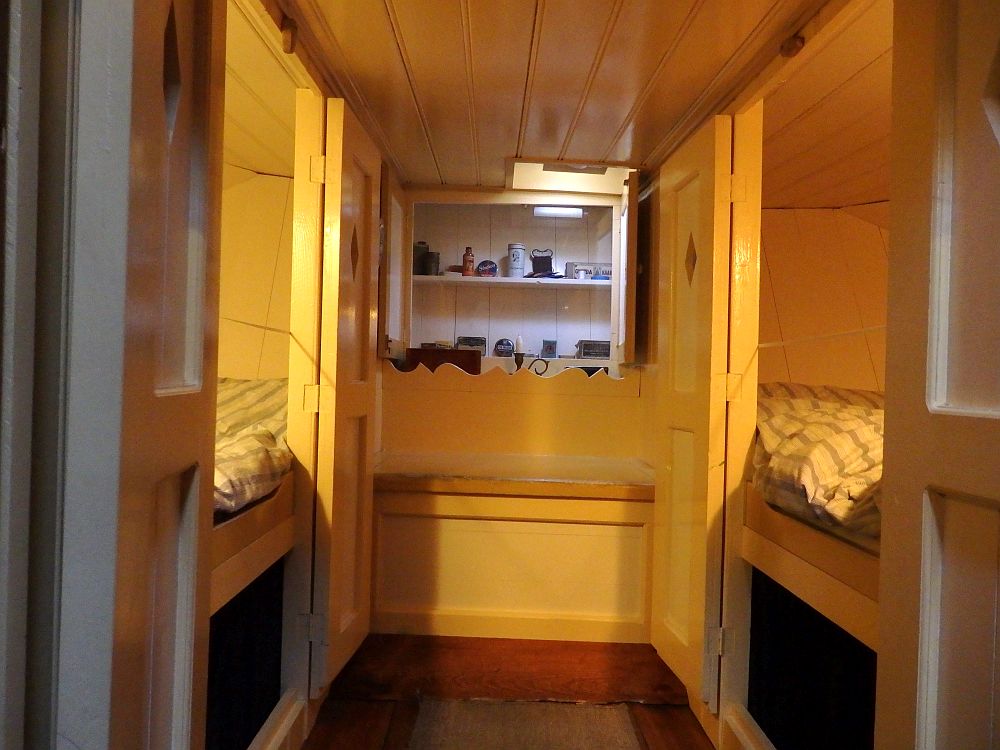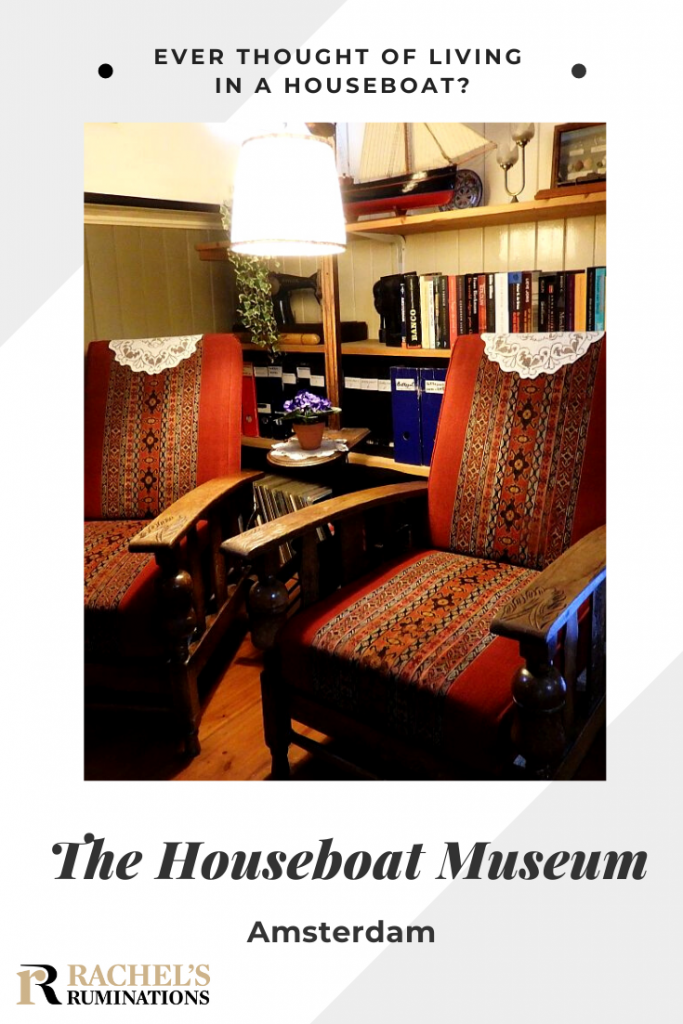The Houseboat Museum, Amsterdam
If you’ve ever wandered the UNESCO World Heritage-listed canal rings of Amsterdam, you’ve noticed the many houseboats moored along the canals. Have you ever wondered what they’re like on the inside? What’s it like to live in a houseboat?
The Houseboat Museum Amsterdam gives a glimpse of that life: a very quick glimpse, given how small a vintage houseboat is. My daughter and I spent about 20 minutes to see the whole thing.

Disclosure: I received free admission to the museum, but paid for my daughter’s admission. All opinions, as always, are my own.
Another disclosure: This article contains affiliate links. If you click on one of them and make a purchase, I’ll receive a small commission. This will not affect your price.
Dutch Houseboats
Like many houseboats around the Netherlands, this one, the Hendrika Maria, is a re-purposed cargo sailboat, originally used to transport things like lumber and gravel through the Dutch canals network. These typical boats are very shallow draft, meaning that the water doesn’t have to be deep to accommodate them. The Hendrika Maria only extends about a half a meter below the waterline.
The Hendrika Maria was built in 1914 and worked as a cargo boat until 1967, when it was converted to an 80-square-meter (861 square feet) houseboat. Before that conversion, the family lived only in the very small space at the stern (rear) of the boat. That section was restored to its original state in 2008.
If you are going to visit several museums and attractions on your trip to Amsterdam, it might be worth your while to buy a GoCity Pass. It includes admission to a whole list of museums, sights and attractions in and outside of Amsterdam. If you’re planning to see several, it’ll save you money.
Instead of a keel or centerboard, canal sailboats have leeboards on both sides. The leeboards are lowered or raised as needed to keep the boat on course. Nowadays, as houseboats, it’s very rare for these vessels to actually move. Some don’t even have motors or sails anymore. They stay moored in one spot along a canal: a mooring leased from the city. They have hookups for plumbing, sewage and electricity, so they can be as comfortable as a house on land.
The Houseboat Museum
Stepping down a short stairway from the deck, we (my daughter and I) first arrived in a tiny room, the restored deckhouse. In the boat’s cargo shipping days, this tiny room – I’d guess about 4 square meters – served as the kitchen, living room and bedroom for the captain and his family.

A tiny “hallway,” perhaps a meter high, extends from the kitchen space into the stern of the boat. Two beds, built into the sides of that hallway, would have been incredibly cosy – or incredibly claustrophobic, depending how you look at it. A family of four could sleep in these “cupboard beds,” the parents on one side and the children on the other. We had to kneel to the ground to enter the little hallway.

The next room is the reception area and shop for the museum, so my sense of experiencing the houseboat way of life disappeared for a moment. After the conversion to houseboat, this space, once part of the cargo hold, served as a good-sized kitchen.
Passing through reception, we entered the living room of the post-conversion houseboat. Surprisingly roomy, it felt homey and comfortable. During the boat’s conversion, a new roof was added to what was originally cargo space. Its long, narrow strips of glass work as skylights. Those, combined with the small square windows along the walls near the ceiling, provided what seemed like adequate light on this grey day.

The next room holds a double bed, but the rest of the space is filled with displays explaining this particular boat’s history. Moving further toward the bow (the front of the boat), we saw a small, very low-ceilinged space for viewing a film about the houseboat. From there we could peer through a window into the unfinished storage space in the bow, with one more cabinet bed visible.
The Price of Houseboat Living
What surprised me most was one wall that included some listings of houseboats for sale in Amsterdam. The prices struck me as outrageous for the small amount of living space they include: upward of €500,000.
I asked the woman at the museum’s reception about this. She told me that the prices include the permit on the mooring. There are no empty moorings available in Amsterdam, and none likely to be added, so while the boat itself might not be worth more than about €150,000, she said, the price is so much higher because of the permit.
Here are some other articles you might enjoy:
For comparison’s sake, here in Groningen, where I live, houseboats are considerably cheaper, less than half the price in Amsterdam. Here, the mooring often also includes a small strip of land along the canal, so some houseboats have, in effect, yards.
Groningen is a university city, and many students rent rooms in houseboats. Often poorly maintained, they have a reputation for being cold and dark. In Amsterdam, with its expensive housing markets, houseboats are a desirable alternative and, like the Houseboat Museum, many have been upgraded and insulated so that they become an attractive place to live in a central location.
(Here are the houseboats that are for sale in Amsterdam right now. And here are the ones for sale in Groningen. The difference in price is huge!)

If you’ve admired houseboats from the outside and wondered about the inside, the Houseboat Museum in Amsterdam is worth a stop. Don’t plan a lot of time, though; it’s tiny and, if it’s crowded, a bit claustrophobic.
Have you ever thought about living in a houseboat? Add a comment below!
Practical information
Why not experience what it’s like to live on a houseboat when you visit Amsterdam? Here are some houseboat accommodations!
The Houseboat Museum, Amsterdam: Prinsengracht 296K, near where Elandsgracht meets Prinsengracht. Open Thursday-Sunday 10:00-17:00 in November and December; and daily 10:00-17:00 in January-October. Admission: €9.50 or €6 if you visit between 10:00 and 12:00.
(Updated May 26, 2024)
My travel recommendations
Planning travel
- Skyscanner is where I always start my flight searches.
- Booking.com is the company I use most for finding accommodations. If you prefer, Expedia offers more or less the same.
- Discover Cars offers an easy way to compare prices from all of the major car-rental companies in one place.
- Use Viator or GetYourGuide to find walking tours, day tours, airport pickups, city cards, tickets and whatever else you need at your destination.
- Bookmundi is great when you’re looking for a longer tour of a few days to a few weeks, private or with a group, pretty much anywhere in the world. Lots of different tour companies list their tours here, so you can comparison shop.
- GetTransfer is the place to book your airport-to-hotel transfers (and vice-versa). It’s so reassuring to have this all set up and paid for ahead of time, rather than having to make decisions after a long, tiring flight!
- Buy a GoCity Pass when you’re planning to do a lot of sightseeing on a city trip. It can save you a lot on admissions to museums and other attractions in big cities like New York and Amsterdam.
Other travel-related items
- It’s really awkward to have to rely on WIFI when you travel overseas. I’ve tried several e-sim cards, and GigSky’s e-sim was the one that was easiest to activate and use. You buy it through their app and activate it when you need it. Use the code RACHEL10 to get a 10% discount!
- Another option I just recently tried for the first time is a portable wifi modem by WifiCandy. It supports up to 8 devices and you just carry it along in your pocket or bag! If you’re traveling with a family or group, it might end up cheaper to use than an e-sim. Use the code RACHELSRUMINATIONS for a 10% discount.
- I’m a fan of SCOTTeVEST’s jackets and vests because when I wear one, I don’t have to carry a handbag. I feel like all my stuff is safer when I travel because it’s in inside pockets close to my body.
- I use ExpressVPN on my phone and laptop when I travel. It keeps me safe from hackers when I use public or hotel wifi.



This museum just went on my must-see list if we ever get back to Holland. Thanks for the great description. I probably couldn’t live on a houseboat full time, but would love to spend a week or so vacationing on one.
Though I haven’t checked, there are very likely hotel houseboats or Airbnb accommodations on houseboats.
I dated a guy back in university, who lived on his boat moored in the harbor. I remember it being very tiny. I would like to see this if I ever get to Amsterdam again. Thanks for hosting. #TPThursday
This one is about 80 square meters, which is a good size for two people.